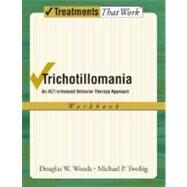Trichotillomania An ACT-enhanced Behavior Therapy Approach Workbook
, by Woods, Douglas W; Twohig, Michael P- ISBN: 9780195336054 | 0195336054
- Cover: Paperback
- Copyright: 3/31/2008
Trichotillomania (TTM) is a complex disorder that is difficult to treat asfew effective therapeutic options exist. Behavior therapy has the greatestempirical support, but the number of mental health providers familiar with TTMand its treatment is quite small. This manual was written as a tool fortherapists to become familiar with an effective treatment for TTM. The treatment approach described in this guide blends traditional behaviortherapy elements of habit reversal training and stimulus control techniques withthe more contemporary behavioral elements of Acceptance and Commitment Therapy(ACT). In the first phase of the program, clients are taught skills for stoppingand preventing their unconscious pulling episodes. In the second phase, clientsare introduced to ACT. Unlike traditional interventions that aim to change typeor frequency of pulling-related cognitions in the hopes of reducing urges topull hair, this innovative program uses strategies to change the function ofthese cognitions. Clients are taught to see urges for what they really are andto accept their pulling-related thoughts, feelings, and urges without fightingagainst them. This is accomplished through discussions about the function oflanguage and defusion exercises that show the client how to respond to thoughtsabout pulling less literally. Over the course of 10 weeks, clients learn to beaware of their pulling and warning signals, use self-management strategies forstopping and preventing pulling, stop fighting against their pulling-relatedurges and thoughts, and work toward increasing their quality of life.Self-monitoring and homework assignments keep clients motivated and engagedthroughout.






